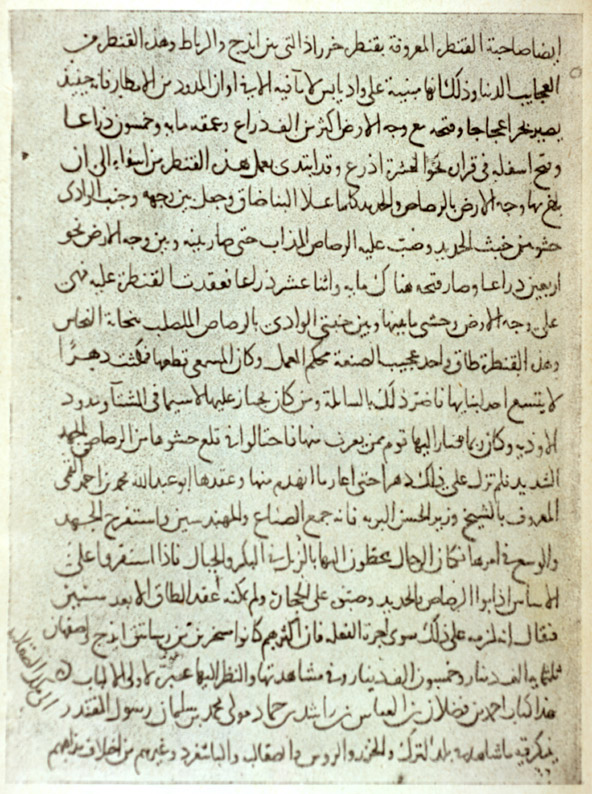Some of the most strange and alluring accounts of Viking Age females emerge from textual sources. Notably, Ibn Fadlan, a tenth-century Muslim scholar, described the funerary practices of the Rus’ somewhere in modern-day Russia:
Then they produced a couch and placed it on the ship, covering it with quilts <made of> Byzantine silk brocade and cushions <made of> Byzantine silk brocade. Then a crone arrived whom they called the “Angel of Death” and she spread on the couch the coverings we have mentioned. She is responsible for having his <garments> sewn up and putting him in order and it is she who kills the slave-girls. I myself saw her: a gloomy, corpulent woman, neither young nor old. (trans. Montgomery 2000)

Ibn Fadlan’s Risala.
Ridawiya MS 5229 fol. 196v.
(source: Wikimedia)
A contemporary understanding of the Rus’ is that they were actually Scandinavian individuals. Through the account of Ibn Fadlan, it appears that there is an association between females and funerary tradition. This idea may be seen through his descriptions of the “Angel of Death,” who engages in the ritualistic sacrifice of a male’s female slave:
The men began to bang their shields with the sticks so that her screams could not be heard and so terrify the other slave-girls, who would not, then, seek to die with their masters. Six men entered the pavilion and all had intercourse with the slave-girl. They laid her down beside her master and two of them took hold of her feet, two her hands. The crone called the “Angel of Death” placed a rope around her neck in such a way that the ends crossed one another (mukhālafan) and handed it to two <of the men> to pull on it. She advanced with a broad-bladed dagger and began to thrust it in and out between her ribs, now here, now there, while the two men throttled her with the rope until she died. (trans. Montgomery 2000)
While graphic, this account provides a fascinating perspective of Viking Age individuals, and more importantly, the role of females in several aspects of funerary tradition. As opposed to the prior section of the guidebook, the account of Ibn Fadlan, as well as the several textual sources that follow, demonstrate the explicit role of females in funerary tradition, as well as serve as an important reminder that Viking Age females functioned at many varied levels of society.
« Previous | Home | Next »